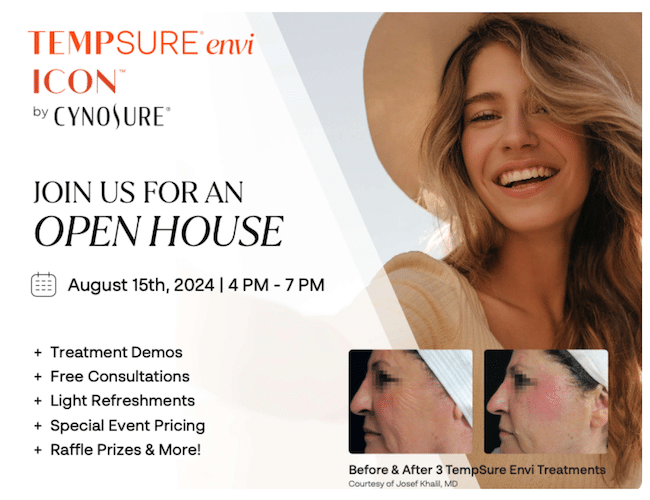Cataracts
What are cataracts, and what causes them?
The lens of your eye is mostly water and proteins. As proteins break down over time, they hang around in your eye. These lingering proteins can make your lens cloudy, so it’s hard to see clearly. This is a typical, though unpleasant, part of aging.
Risk factors can speed up the formation of cataracts, such as:
- Health issues such as obesity, high blood pressure, and diabetes
- Steroids and common medications to treat conditions like arthritis and lupus
- Phenothiazine drugs such as chlorpromazine (Thorazine®), used to treat a variety of conditions such as schizophrenia and bipolar disorder
- Eye surgery or eye injuries
- Radiation treatment to your upper body
- Excessive sunlight exposure without eye protection, like sunglasses
- Excessive alcohol use
What are the symptoms of a cataract?
Cataracts are a common part of the eye’s aging process. Eventually, they can cause:
- Vision that’s cloudy, blurry, foggy, or filmy
- Sensitivity to bright sunlight, lamps, or headlights
- Glare (seeing a halo around lights), especially when you drive at night with oncoming headlights
- Prescription changes in glasses, including sudden nearsightedness
- Double vision
- Need for brighter light to read
- Difficulty seeing at night (poor night vision)
- Changes in the way you see color
How are Cataracts Diagnosed?
To determine whether you have a cataract, our eye doctor in Nashville, TN, will review your medical history and symptoms and perform a comprehensive eye exam. For an eye exam, call our Nashville Optometrist or schedule your eye care appointment online. Your doctor may conduct several tests, including:
- Visual acuity test. A visual acuity test uses an eye chart to measure how well you can read a series of letters. Your eyes are tested one at a time, while the other eye is covered. Using a chart or a viewing device with progressively smaller letters, your eye doctor determines if you have 20/20 vision or if your vision shows signs of impairment.
- Slit-lamp examination. A slit lamp allows your eye doctor to see the structures at the front of your eye under magnification. The microscope is called a slit lamp because it uses an intense line of light, a slit, to illuminate your cornea, iris, lens, and the space between your iris and cornea. The slit allows your doctor to view these structures in small sections, which makes it easier to detect any tiny abnormalities.
- Retinal exam using dilation. To prepare for a retinal exam, your eye doctor puts drops in your eyes to open your pupils wide (dilate). This makes it easier to examine the back of your eyes (retina). Using a slit lamp or a special device called an ophthalmoscope, your eye doctor can examine your lens for signs of a cataract.
- Retinal exam using Zeiss Clarus technology. This technology enables your doctor to see as much of the retina as possible, including the peripheral areas where the first signs of Cataracts are most likely to occur. The scan is non-invasive and provides cross-sectional images of the important structures of your retina. This makes it possible for your doctor to see the subtlest, earliest changes associated with Cataracts.
- Applanation tonometry. This test measures the fluid pressure in your eye. There are multiple different devices available to do this.
How are Cataracts Treated?
Cataract treatment consists of both non-surgical methods of improving symptoms of vision deterioration as well as surgical removal of the cataract.1 You and your eye doctor will develop a cataract treatment plan based on the type and severity of your cataract. Below are several methods of cataract treatment.
Non-Surgical Cataract Treatment
Early cataract treatment is aimed at improving your quality of vision. When cataract symptoms appear, you may experience cloudy or blurry vision, light sensitivity, poor night vision, double vision, and changes in your eyewear prescription. Certain changes can significantly reduce these symptoms.1
Cataract symptoms may be improved with new eyeglasses, anti-glare sunglasses, or magnifying lenses. Certain tints and coatings can also be added to lenses to reduce symptoms. Even better positioning of lamps or reading lights can help. Your eye doctor may recommend that you wear a hat when outdoors in addition to quality sunglasses to help prevent further cataract development.
However, it is very important that your cataract treatment plan includes proper counseling regarding the impact of reduced vision. For example, if your vision is reduced significantly, even with the best-corrected prescription, you should be advised of the many risks associated with driving and operating large equipment or machinery.
If one eye has a significant cataract and the other eye does not, you may lack the ability to accurately judge distances.
Nashville Cataract Surgery
Surgical removal of cataracts is recommended when your vision loss interferes with everyday activities, such as driving, reading, working on the computer, or watching TV. Our Nashville optometrist can recommend a cataract surgeon in this case.
During cataract surgery, the surgeon removes the clouded lens and replaces it with an artificial lens implant. The new lens is clear, shaped to fit your eye, and personalized to your vision needs. Most eye surgeons who perform cataract surgery consider surgery when corrected vision is 20/40 or worse. However, in all cases, the determining factor is whether impaired vision negatively impacts occupational performance as well as daily activities, especially driving.
Surgery is usually performed on one eye at a time. This is done to minimize potential complications. Cataract surgery is performed in an outpatient surgical center with local anesthesia. Patients are generally released directly after surgery.
Lifestyle and Nutrition
Nutrition
Some research shows that eating foods high in antioxidants like vitamins C and E may help prevent cataracts. If you already have cataracts, it may slow their growth. Foods high in Omega-3 fatty acids are also known to reduce the risk of cataract development and progression. Lutein and zeaxanthin are yellow carotenoid antioxidants known as macular pigments. They are concentrated in the macula, the central part of the retina. Supplementation with lutein and zeaxanthin are known to decrease the prevalence of cataracts. One food for example, broccoli, contains zeaxanthin and lutein.
Here is a sample of recent research that suggests a healthy diet and specific eye vitamins may help prevent cataracts:
- Researchers in Sweden published the results of a study of the association between all antioxidants in the diet and age-related cataracts. More than 30,000 women age 49 and older completed a dietary questionnaire and were observed for age-related cataract development for an average period of 7.7 years. The study authors found that women whose diet contained the highest total antioxidant capacity (TAC) were significantly less likely to develop cataracts, compared with those whose diets were low in antioxidants. The main contributors to dietary TAC in the study population were fruit and vegetables (44.3 percent), whole grains (17.0 percent) and coffee (15.1 percent).
- A large study of adult women in the US found that eating foods rich in a variety of vitamins and minerals may help delay the development of cataracts. In an earlier study published in the same journal, the same researchers found diets rich in lutein and zeaxanthin and are moderately associated with decreased prevalence of cataracts in older women.
- A 10-year study of more than 2,400 older adults in Australia found that higher intakes of or the combined intake of multiple antioxidants reduced the risk of cataracts in this population.
- A large study of female health professionals in the United States found that higher dietary intakes of lutein and zeaxanthin were associated with a significantly decreased risk of cataracts.
Smoking
You know that smoking is bad for your lungs and your heart, but it’s also really bad for your eyes. When it comes to cataracts, smoking is a risk factor you can control. Smoking creates more free radicals in your eyes. These are chemicals that harm cells. Antioxidants, all those good chemicals that you get from fruits and vegetables, fight the bad chemicals. But smoking kills off the good chemicals, and it produces a lot of toxins that can contribute to cataracts.
Other Lifestyle Options
To deal with symptoms of cataracts until you decide to have surgery, try to:
- Make sure your eyeglasses or contact lenses are the most accurate prescription possible
- Use a magnifying glass to read if you need additional help reading
- Improve the lighting in your home with more or brighter lamps
- When you go outside during the day, wear sunglasses or a broad-brimmed hat to reduce glare
- Limit your night driving


